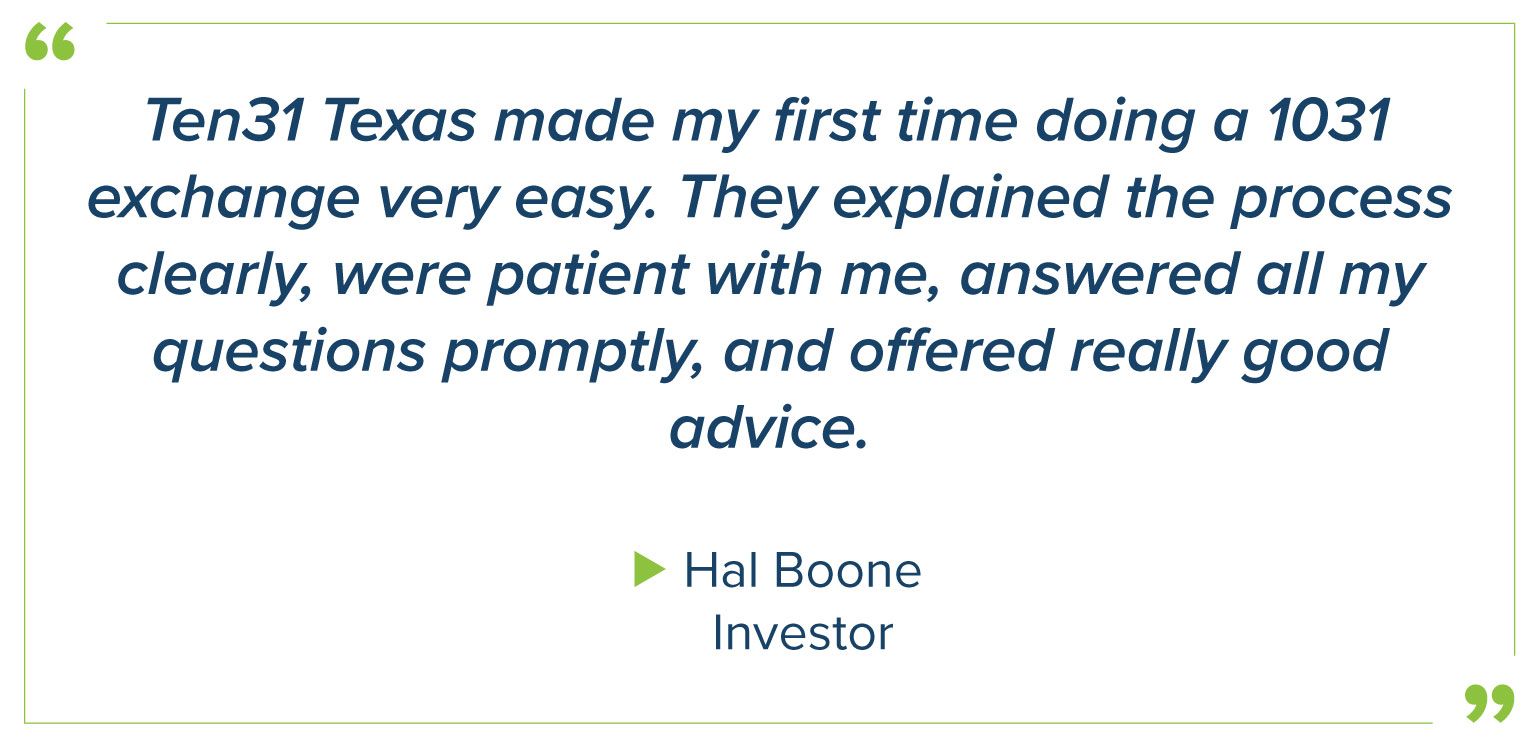By Jason Gorman
•
November 3, 2025
A 1031 Exchange is a powerful tool for investors looking to defer capital gains taxes and reinvest their equity. While the process can be complex, it follows a clear structure, and with the right guidance, it can be a smooth and strategic move. Here’s a quick look at the four key steps involved in a successful 1031 Exchange: Step 1: Build Your Strategy The first step in a 1031 exchange happens before you list your property or begin marketing. It’s essential to identify and connect with a Qualified Intermediary (QI) who will play a central role in the exchange process. QIs ensure compliance with IRS rules and deadlines, state laws, and closing procedures, but not all QIs are created equal. Working with an experienced, responsive QI can make all the difference in keeping your exchange on track. During your initial strategy call, the QI will help you: Understand the requirements of a 1031 Exchange Evaluate how those requirements apply to your specific transaction Plan ahead for identifying and acquiring a replacement property Ten31 Texas Tip: Start discussions with a qualified QI early to help avoid costly mistakes and ensure you’re prepared for the strict timelines that follow. A quick strategy call early on can save you time, stress, and money down the road. Step 2: Close on Your Relinquished Property Once you’ve accepted a contract and are ready to close, your QI prepares the necessary exchange documents. At closing, the QI receives the net proceeds from the sale and holds them as “exchange funds.” This is a legal requirement of the IRS, and if the investor takes possession of the funds, even briefly, the exchange could become disqualified. From the closing date (Day 0), two critical deadlines begin: 45-Day Identification Period: You must identify potential replacement properties within this window. 180-Day Exchange Period: You must complete the purchase of one or more identified properties within this timeframe. Ten31 Texas Tip: Make sure everyone involved in the transaction (your agent, title company, and QI) is aligned with your strategy. The IRS deadlines are firm and missing them by a day can invalidate your exchange. Step 3: Identify Your Replacement Property During the 45-day Identification Period, you’ll submit a signed identification form to your QI listing the properties you may want to purchase. The IRS provides three identification methods to help investors structure their exchange based on property type, value, and strategy. Three-Property Rule: Identify up to three properties, regardless of value. 200% Rule: Identify any number of properties, as long as their combined value doesn’t exceed 200% of the relinquished property. 95% Rule: Identify any number of properties, but you must purchase at least 95% of their total value. This is a high-risk option that should be used when the first two rules don’t apply. Ten 31 Texas Tip: D on’t be afraid to adjust your list during the 45-day window if something better comes along. A well-thought-out identification list gives you flexibility, but once the ID Period closes, your options are locked. Step 4: Purchase Your Replacement Property Once you’re under contract to purchase a replacement property, your QI will coordinate with the title company to wire the exchange funds. If you’re buying multiple properties, you’ll work with your QI to allocate the funds appropriately. A few key rules to keep in mind: If you use all your exchange funds on one purchase, the exchange is complete. If you have remaining funds and no other identified properties, the exchange ends and the leftover funds are taxable. This is known as a partial exchange, and it’s a strategy some investors use intentionally. If you’ve identified multiple properties, you can continue purchasing until the funds are exhausted or the 180-day period ends. Ten31 Texas Tip: Always have a backup property identified in case your first choice falls through. Delays in closing, especially with new construction or complex transactions, can jeopardize your exchange. Navigate Your 1031 Exchange with Confidence A 1031 Exchange offers flexibility, tax advantages, and strategic growth opportunities for real estate investors. With the right planning and a knowledgeable Qualified Intermediary, you can navigate the process confidently and make the most of your reinvestment. Have questions about the 1031 Exchange timeline? We're here to help!















